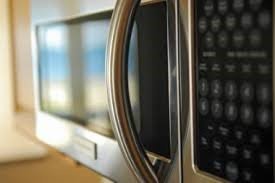Non-Ionizing Radiation Used in Microwave Ovens
- Microwave ovens use electromagnetic radiation.
- Microwaves do not make food radioactive.
Microwave ovens use electromagnetic waves that penetrate food, causing some molecules to vibrate and generate heat which is transferred throughout the food. Learn more about the electromagnetic spectrum.
About Non-Ionizing Radiation Used in Microwave Ovens

Microwave ovens use electromagnetic radiation to heat food. The non-ionizing radiation used by a microwave does not make the food radioactive. Microwaves are only produced when the oven is operating. The microwaves produced inside the oven are absorbed by food and produce the heat that cooks the food. Microwave ovens are constructed to ensure the electromagnetic radiation does not leave the oven. This includes safety interlocks which ensure that the oven turns off anytime the door is opened. Most injuries from microwave ovens are the result of heat related burns from overheated food or liquids.
If microwave ovens are used while broken or altered, it is possible for them to leak electromagnetic radiation. Microwave radiation leaks are hard to detect because you can't smell or see microwaves. The U.S. Food and Drug Administration (FDA), which regulates radiation-emitting products such as microwave ovens, advises against standing directly in front of or up against the oven while it is operating. This will avoid harm from any possible leaks.
What You Can Do
- Follow the manufacturer's instruction. Products will contain a safety manual and safety precautions specific to your microwave oven model.
- Never operate if broken. Don’t use a microwave oven if you can't shut the oven door or it doesn't seal well.
- Take precautions. As an added safety precaution, don't stand directly against or in front of an oven while it is operating.
